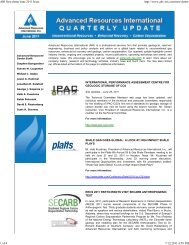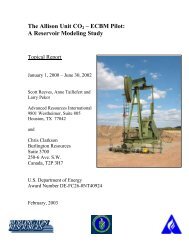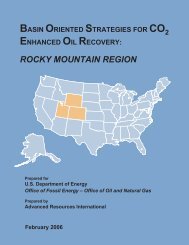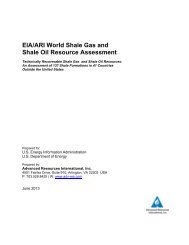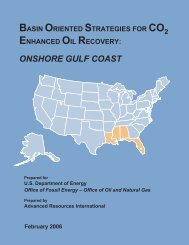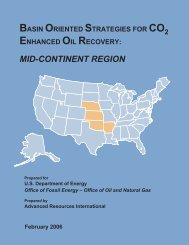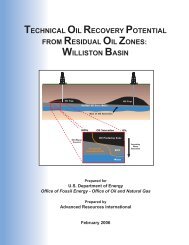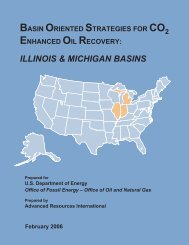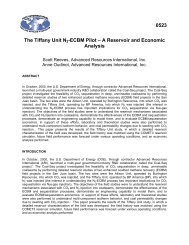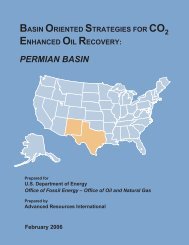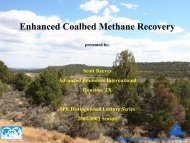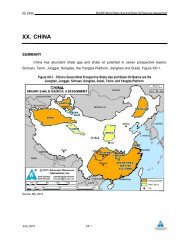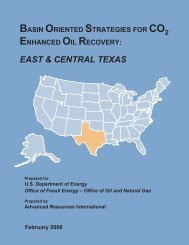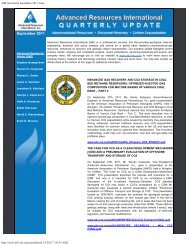Assessing Technical and Economic Recovery of Oil Resources
Assessing Technical and Economic Recovery of Oil Resources
Assessing Technical and Economic Recovery of Oil Resources
You also want an ePaper? Increase the reach of your titles
YUMPU automatically turns print PDFs into web optimized ePapers that Google loves.
ORIGINALPOST BREACHSealOIL TRAPSealOIL TRAPROZROZWater LegWater LegTYPE 2 ROZFigure 4. Original Accumulation with a Breached/Repaired Seal, Forming a ROZ3. Altered Hydrodynamic Flow Fields. Figure 5, Change in Hydrodynamic Conditions,Causing Sweep <strong>of</strong> the Lower <strong>Oil</strong> Column <strong>and</strong> the <strong>Oil</strong>/Water Contact Tilt, Forminga ROZ, shows the same original trap seen in Figure 2. In this example, achange in the west-to-east hydrodynamic flowfield creates a tilted OWC <strong>and</strong> theROZ. Here, the OWC tilt is due to the hydrodynamic forces on the oil column.Hubbert 6 provides analytical methods to determine oil-water contact tilts basedupon the potentiometric gradient <strong>of</strong> the aquifer <strong>and</strong> the densities <strong>of</strong> the oil <strong>and</strong>water. With information on the current OWC tilt <strong>and</strong> knowledge <strong>of</strong> the oil <strong>and</strong>water densities, one can calculate the hydrodynamic flow field responsible for theoil-water contact tilt beneath the main oil column using the following formula:6 Hubbert, M.K. (1953), “Entrapment <strong>of</strong> Petroleum under Hydrodynamic Conditions,” AAPG Bulletin, Vol37, No. 8 (August 1953), pp. 1954-2028.2-5 February 2006



